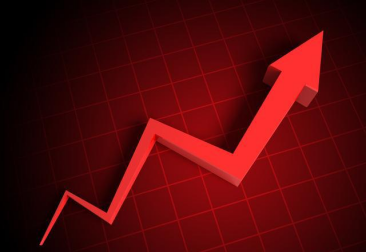PCE data hit a new high
The Annual core PCE price index, the Fed's most closely watched measure of inflation, came in at 5.4% in February, slightly below expectations of 5.50% but still the highest since 1983. The core PCE price index came in at 0.4 percent month-on-month in February, in line with expectations.
In fact, the PCE inflation figures measure conditions prior to the outbreak of the Russia-Ukraine crisis, with inflation expected to rise sharply in March given the outbreak of the conflict late last month and the subsequent impact on global commodity prices and supply chains. That is what this week's more timely HICP3 inflation figures for the eurozone show. However, given that the US economy is less affected by the conflict, the surge in US prices should be less dramatic.
The Fed is already far behind the inflation curve. The Fed is unlikely to retreat from its hawkish stance unless inflation shows signs of peaking. However, there is little chance of that happening, with parts of the yield curve either briefly inverted or nearly inverted, pointing to the possibility of a recession.
In the 1970s, the United States experienced an unprecedented outbreak of inflation, which eventually became an epic "stagflation". When the INFLATION rate soared to an unprecedented 15% in 1980, THE GDP growth rate of the United States plunged into an unprecedented crisis, and the unemployment rate soared.
In the 1980s Paul Volcker, then chairman of the Federal Reserve, pulled the US out of stagflation by defying market expectations at all costs and raising interest rates to a record 21%. But can Mr Powell tame inflation as Mr Volcker did when it has run wild?
Powell tried to turn the tide
This year, the market has become more and more concerned about the U.S. economy. On the one hand, the rapid growth in the early stage of economic restart has faded, the impact of fiscal support has weakened, and the monetary easing policy has withdrawn, slowing down the economic growth. On the other hand, the high oil price and high inflation have depressed the consumer confidence in the United States. Accordingly, the Federal Reserve's increasingly intensified interest rate hike and shrinking of the balance sheet will also bring pressure to the economy that has tended to decline.
Mr Powell did pose like Mr Volcker at his "debut" rate rise last month, and in his latest, he has made it clear that he will not only do what Mr Volcker did -- tame inflation -- but also do what Mr Volcker did not -- avoid a recession.
The problem is that Mr Powell is now presented with an unusual test paper: growth well above sustainable levels, inflation well above expectations and a rare commodity price shock from the Russia-Ukraine conflict.
For now, the Fed needs to face the reality that its real interest rate, after adjusting for inflation, is still negative, meaning the economy is already over the speed limit, and the Fed has kept its foot on the gas pedal. For inflation to return to the Fed's 2% target, then, the economy would need to endure higher interest rates and a greater risk of recession than currently anticipated.
As the Federal Reserve moves ahead with interest rate hikes, the US bond yield curve has partially inverted, and a great debate on whether the inverted yield curve means a recession has begun on Wall Street.
Yield inverted positive gold
The main transmission route through an inverted yield curve to asset prices is through rising recession expectations. After a history of inverted curves, overly strong rate hike expectations can cool. Therefore, when the yield curve is inverted in history, it is difficult for the 10Y Treasury yield center to rise further, and gold is often a good medium to buy.
For example, at the end of 2018, parts of the yield curve began to invert, and in 2019, the Federal Reserve fully shifted its pigeon, and gold rose 18%. The yield curve inverted here at the end of 2019 and gold hit an all-time high in 2020.
We expect the 10-year Treasury yield to peak around Q2 when the Fed boots on the floor, or just above 2.2%, but the probability of breaking 2.5% is still low. Looking further ahead, with the boots of shrinking the balance sheet landing, mid-term elections approaching, and economic downward pressure appearing, the yield of 10-year US Treasury bonds may enter a downward cycle, the scale of global negative interest rate bonds will rebound again, and gold will also usher in a one-year recovery. Standing at the moment, albeit slightly to the left, gold's allocation value is already very significant.
 2022-04-01
2022-04-01
 1414
1414





 简体中文
简体中文
 ภาษาไทย
ภาษาไทย
 繁體中文
繁體中文
 Indonesia
Indonesia











